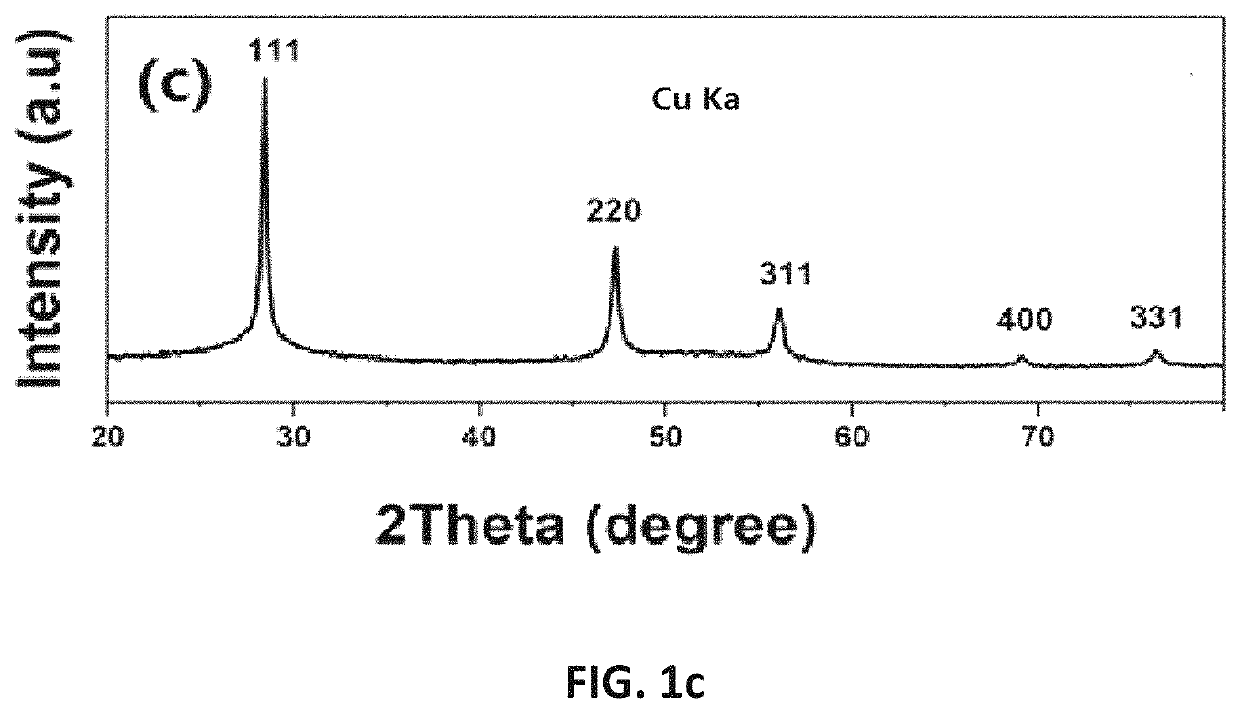System and method for producing silicon-containing product by utilizing silicon mud byproduct of cutting silicon material with diamond wire
- Summary
- Abstract
- Description
- Claims
- Application Information
AI Technical Summary
Benefits of technology
Problems solved by technology
Method used
Image
Examples
example 1
on and Determination of Silicon Content of Silicon Raw Materials
[0168]The as received silicon waste material is grayish black, which mainly contains silicon powder and contains 10-30% liquid. Five 5 kg of the silicon waste material was placed in a quartz crucible and placed in an oven and dried at 110° C. for 24 hours until no volatile odorous gas overflowed to obtain a large piece of silicon waste, and then the bulk silicon waste was pulverized and repeatedly baked to 230° C. until The silicon waste was 100 mesh or less without weight loss, and finally 3943 g of dry silicon waste was obtained. All the silicon sludge prepared by this method was used as a raw material in all experiments thereafter.
[0169]FIG. 1b and FIG. 1c are scanning electron micrographs (FIG. 1b) and X-ray diffraction patterns (FIG. 1c) of the dried silicon waste in Examples 1-4 before the reaction. It can be seen that there is no other crystalline material other than silicon, but the silicon oxide on the surface ...
example 2
[0175]Take 2000 g of the dried silicon waste material obtained in Example 1, place 2000 ml of graphite crucible, put it into a vacuum induction melting furnace (Shanghai Chenhua), first evacuate to a vacuum of 10-3 torr or less, and then flush it into high-purity argon gas and heat it up to 1500° C. During the heating process, silicon monoxide is formed and volatilized. After the silicon is melted (observed through the transparent window), it is cooled to room temperature, and 1400 g of crystal silicon (including the part that cannot be separated inside the crucible) was obtained. It can't be taken out in the crucible, and the weight of the crucible is increased by 30 grams. Its appearance is similar to that of polysilicon. The composition analysis is shown in Table 1. In addition, this experiment did not dock specifically to silicon monoxide collection equipment, and at the same time, some of the silicon oxide was not completely reacted. Only 5 grams of the sample was obtained from...
example 3
[0176]As shown in FIG. 3, a 500 KW industrial melting furnace is equipped with a built-in graphite crucible of 200 liters. The top has a graphite cap. The 12-foot quartz tube is connected to a two-meter-diameter stainless steel drum with a diameter of 120 cm and then connected to a Roots blower to ensure that the stainless steel barrel has a continuous negative pressure (0.7-0.9 atm) and is externally cooled by tap water.
[0177]First, 25 kg of dry silicon powder is add to the graphite crucible (since the density of the silicon powder is lower, depending on the particle size distribution of the particles, generally 0.6-1.2 g / cc, which is much lower than the density of elemental silicon of 2.3 and the density of the melted silicon is greater than elemental silicon, up to 2.56). The induction heating element 2 equipment was started to heat up to 1500-1600° C. in 2 hours. When there is no silicon monoxide to overflow, heating was stopped, and then add 125 kg of dry silicon powder to the ...
PUM
| Property | Measurement | Unit |
|---|---|---|
| temperature | aaaaa | aaaaa |
| temperature | aaaaa | aaaaa |
| melting point | aaaaa | aaaaa |
Abstract
Description
Claims
Application Information
 Login to View More
Login to View More - R&D
- Intellectual Property
- Life Sciences
- Materials
- Tech Scout
- Unparalleled Data Quality
- Higher Quality Content
- 60% Fewer Hallucinations
Browse by: Latest US Patents, China's latest patents, Technical Efficacy Thesaurus, Application Domain, Technology Topic, Popular Technical Reports.
© 2025 PatSnap. All rights reserved.Legal|Privacy policy|Modern Slavery Act Transparency Statement|Sitemap|About US| Contact US: help@patsnap.com



